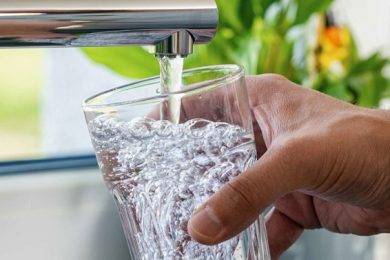Did you know that about one in every four people in the US drinks potentially unsafe water? What’s more, these folks aren’t just those who live in rural areas. Many residents of large metros also get exposed to dangerous tap water.
Lead contamination is one of the most significant threats to drinking tap water. The Flint, MI case, was bad enough. However, a 2016 study found that over 3,800 other US communities had even higher lead levels.
That should be enough to make you want to learn how to make tap water safe to drink.
Fortunately, there are many ways to treat tap water, many of which you can apply to outdoor water sources. We’ll give you the details below, so be sure to read on.
-
Know What’s In Your Tap Water
The US EPA says that 92% of community water supply meets the agency’s health standards. If your tap water comes from these sources, it should be safe to consume straight from the faucet.
However, if you think that you’re part of the remaining 8%, you should get in touch with your water provider. Community water facilities should provide customers with a yearly water quality report. This contains facts about the quality of water they supply, including its contents.
Most water facilities roll out this report every July. If you haven’t received one, you should ring up your water utility company. Ask them for a copy of the most recent Consumer Confidence Report.
You can also call your local health department if you need help in decoding the report. They should be able to tell you if your tap water is safe to drink straight or if you need to treat it to make it potable.
-
Bring It to a Rolling Boil
Boiling tap water for drinking has always been a low-cost way to make tap water safer. However, the CDC recommends boiling water for at least one minute. Three, if you live in an area with an elevation of 6,500 feet or higher.
Boiling can kill most of the dangerous germs, viruses, and worms in the water. If your tap water is clear, you can boil it straight. If it’s murky, filter it first as this can help remove sediments that may be making the water cloudy.
-
Let the Sun Do the Job
Using the sun to make tap water safe to drink is a nifty technique you can use during emergencies. The sun’s heat and ultraviolet rays can destroy most of the germs contaminating the water. This ingenious trick is an old-age method called “solar disinfection” or SODIS.
For this, you need filters (or a piece of clean cloth or coffee filters) and clean, transparent bottles. Filter the water first before you transfer them into the clear bottles.
Once full, load the bottles in another clean container, such as a box or a tray. It’s best to use a dark-colored surface, as this absorbs more heat, so the water will also warm up faster. Place the container with your water bottles in a spot that receives a lot of direct sunlight.
You need to let your water soak the sun’s germicidal effects for at least six hours. This makes it quite tedious, but it does make for an awesome survival skill. Plus, this knowledge can be life-saving if you ever find yourself out of water in the outdoors.
-
Add a Touch of Lime
Researchers found that lime juice can cut the time needed for SODIS from six hours to just 30 minutes. Lime juice (or slurry) contains psoralens, which are germicidal chemical compounds. Its addition can drastically reduce pathogens like E. coli after only half an hour of SODIS.
-
Drop a Tablet
Water purifying tablets can kill harmful waterborne microorganisms like protozoa, bacteria, and viruses. One tablet can be enough to make one to two liters of water safe for drinking. That’s why many hikers and campers usually carry these portable and lightweight purifiers.
Some purification tablets contain chlorine, while others use iodine. Either way, you simply have to drop one of them straight into untreated water. The tablets should then dissolve and release the purifying chemical.
Note that these products have varying requirements and length of dissolving time. For example, some tablets are only effective if the water meets a certain pH level or temperature. Many also need at least 30 minutes to dissolve completely, while others may require at least an hour or more.
With that said, make sure that you follow the manufacturer’s directions. Failure to do so may impair the effectiveness of the product.
-
Filter Out the Impurities
Water filters can either be point-of-use (POU) or point-of-entry (POE) systems. Both types remove physical, biological, and chemical elements in the water. The more innovative ones can also remove lead, chlorine, and even some carcinogens.
The main difference between the two is their installation location.
POU filters are those that you install in individual fixtures. An example is a Kitchenaid refrigerator water filter used in a fridge dispenser. Other examples are faucet-mounted filters and under-sink filters.
By contrast, POE systems are whole-house filters. That’s because they filter all the water that enters your home; hence, “point-of-entry.” You need to install a POE filter directly on your main water supply line.
POU filters are more affordable than POE systems, as they are only for single fixtures. Meaning, they only filter limited amounts of water. However, if you also want to bathe or launder your clothes with filtered water, consider a POE unit.
Hone Your Survival Skills With These Tips on How to Make Tap Water Safe to Drink
There you have it, some of the best ways on how to make tap water safe to drink. Filters are some of your most convenient options, but SODIS is great for outdoor use too. If there’s a water advisory in your area, it may be best not just to use a filter but to boil your water too.
Ready for more ingenious health hacks and tricks like this? Be sure to check out our other news and blog posts then!
I am Jones Smith and I am here to share my experience and expertise in writing. I’ve been writing articles for different publications for more than 6 years. I have a varied range of interests and that’s why I love blogging about different topics. In my opinion, blogging is a lot like acting, and I consider writing blog posts as an acting job. I am an entrepreneur by heart and there is nothing big or small when it comes to starting a business.











